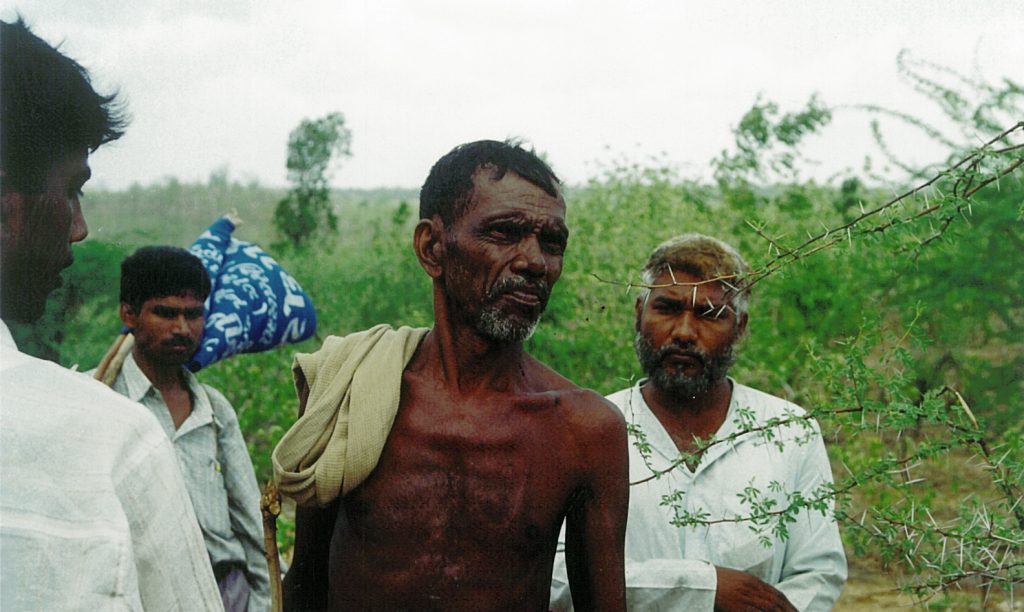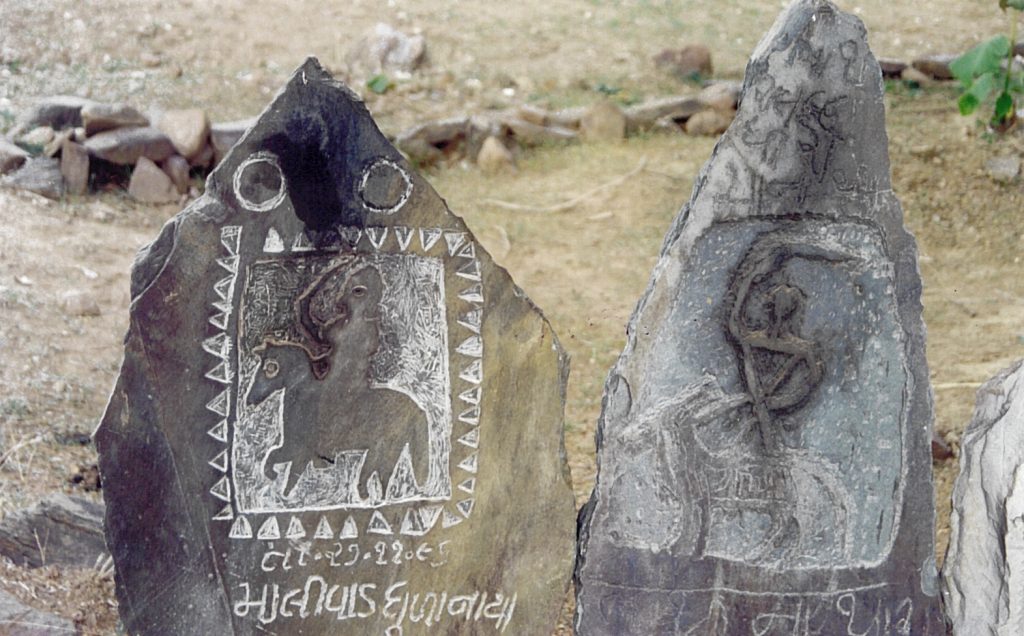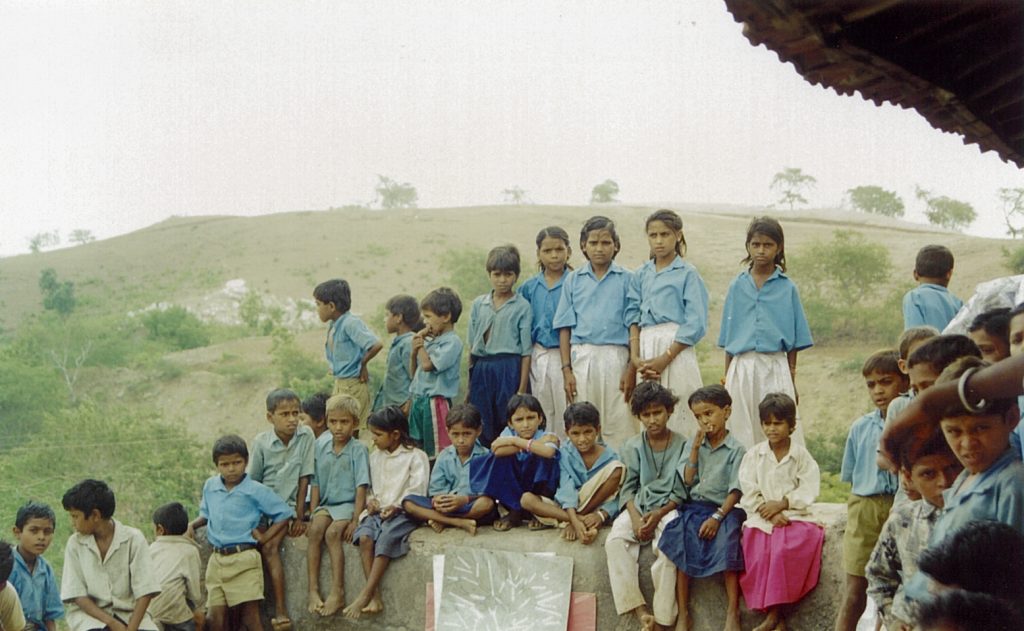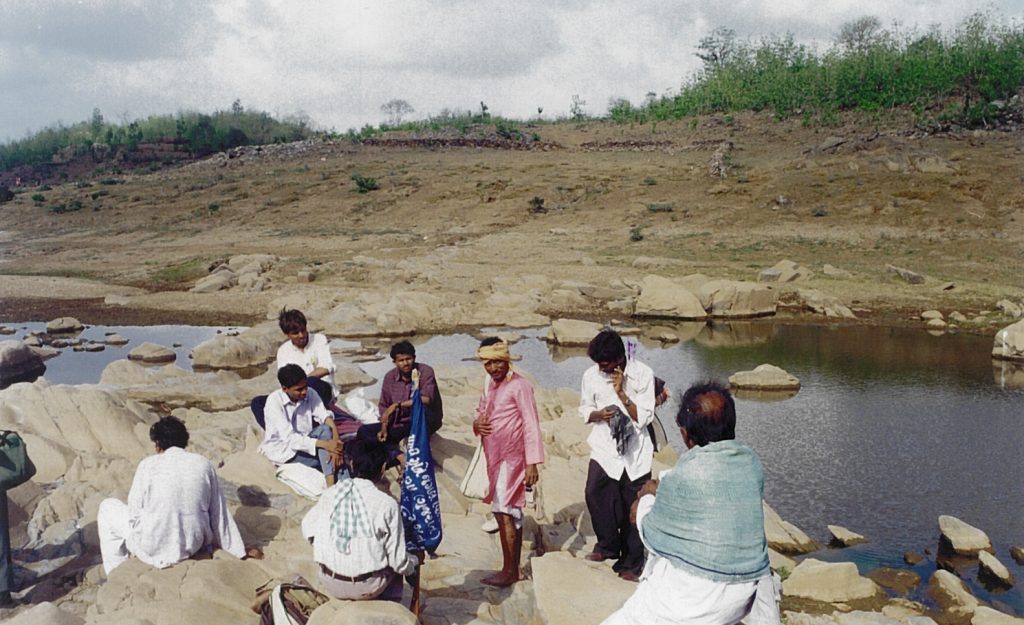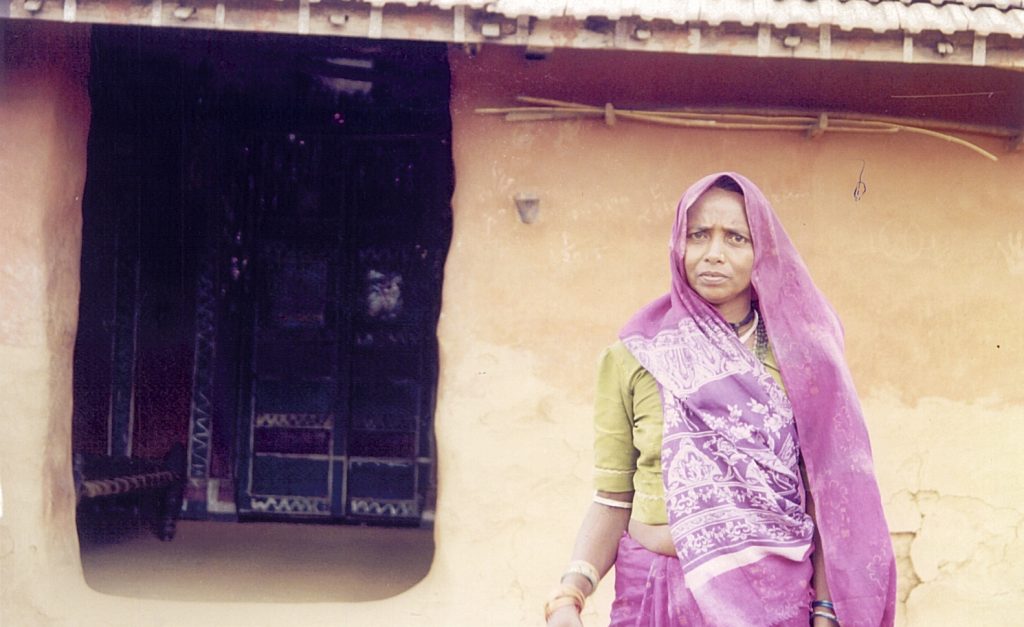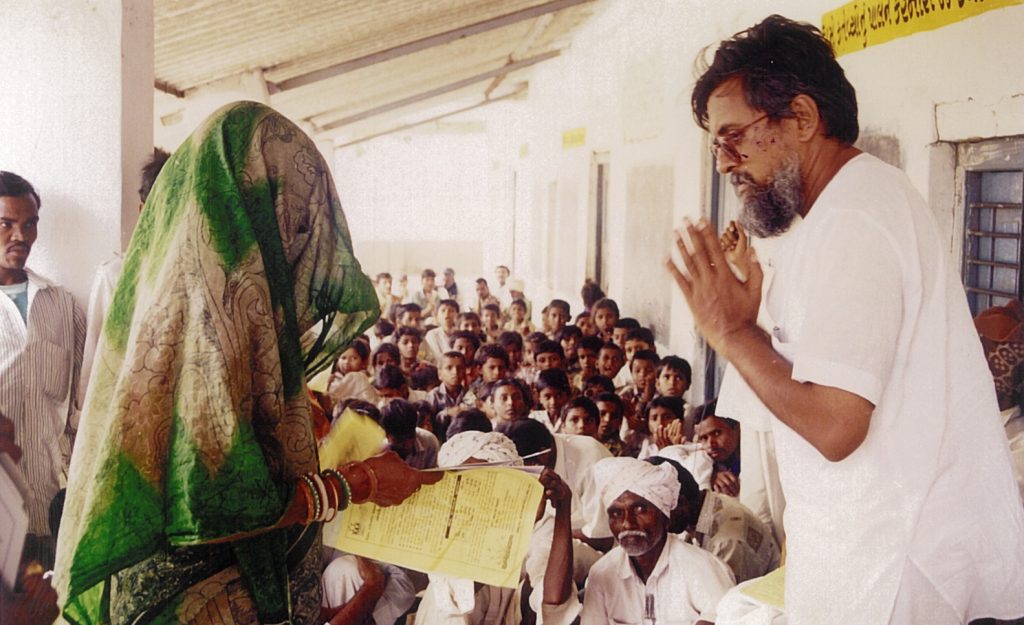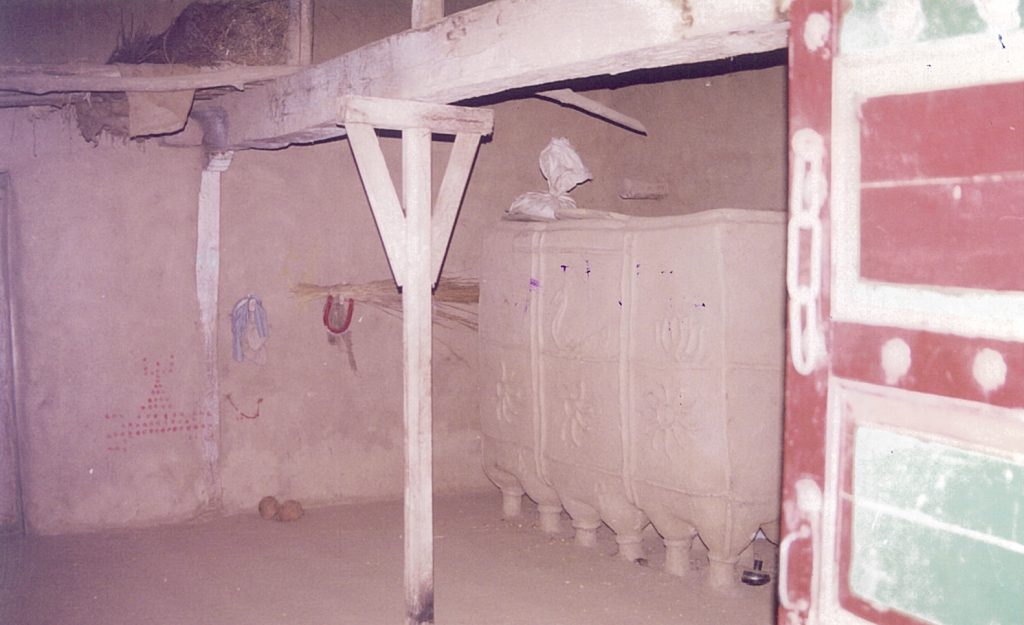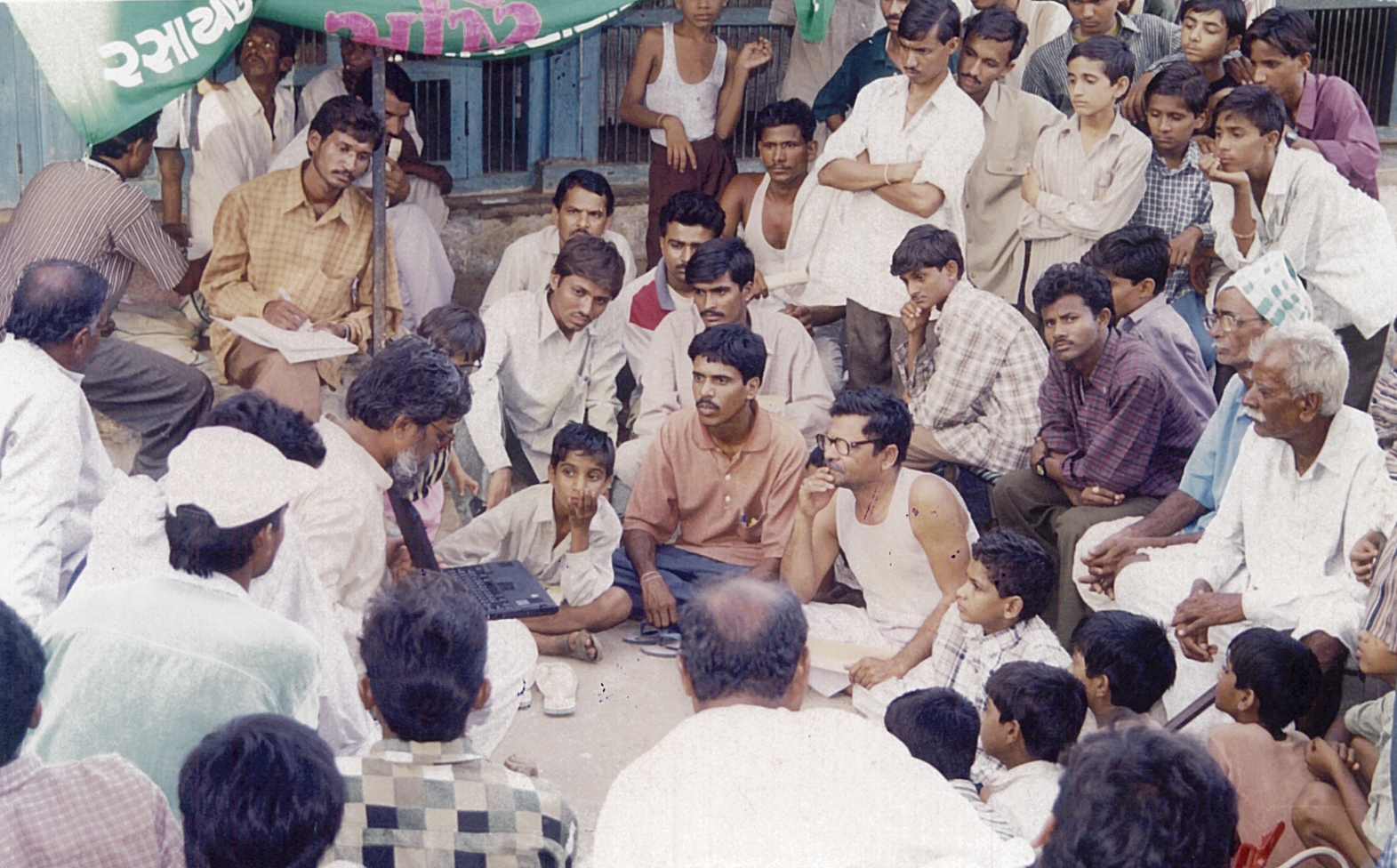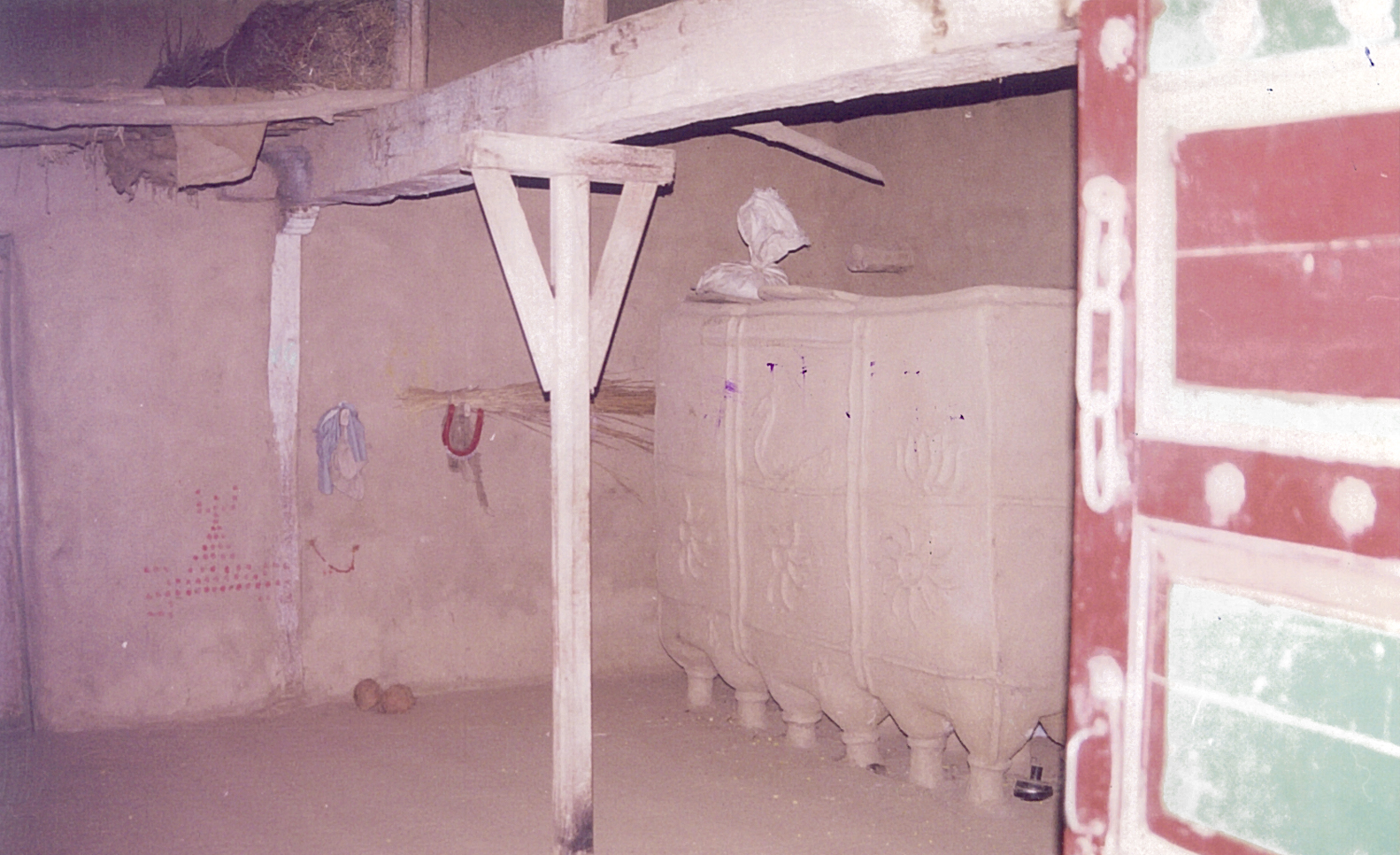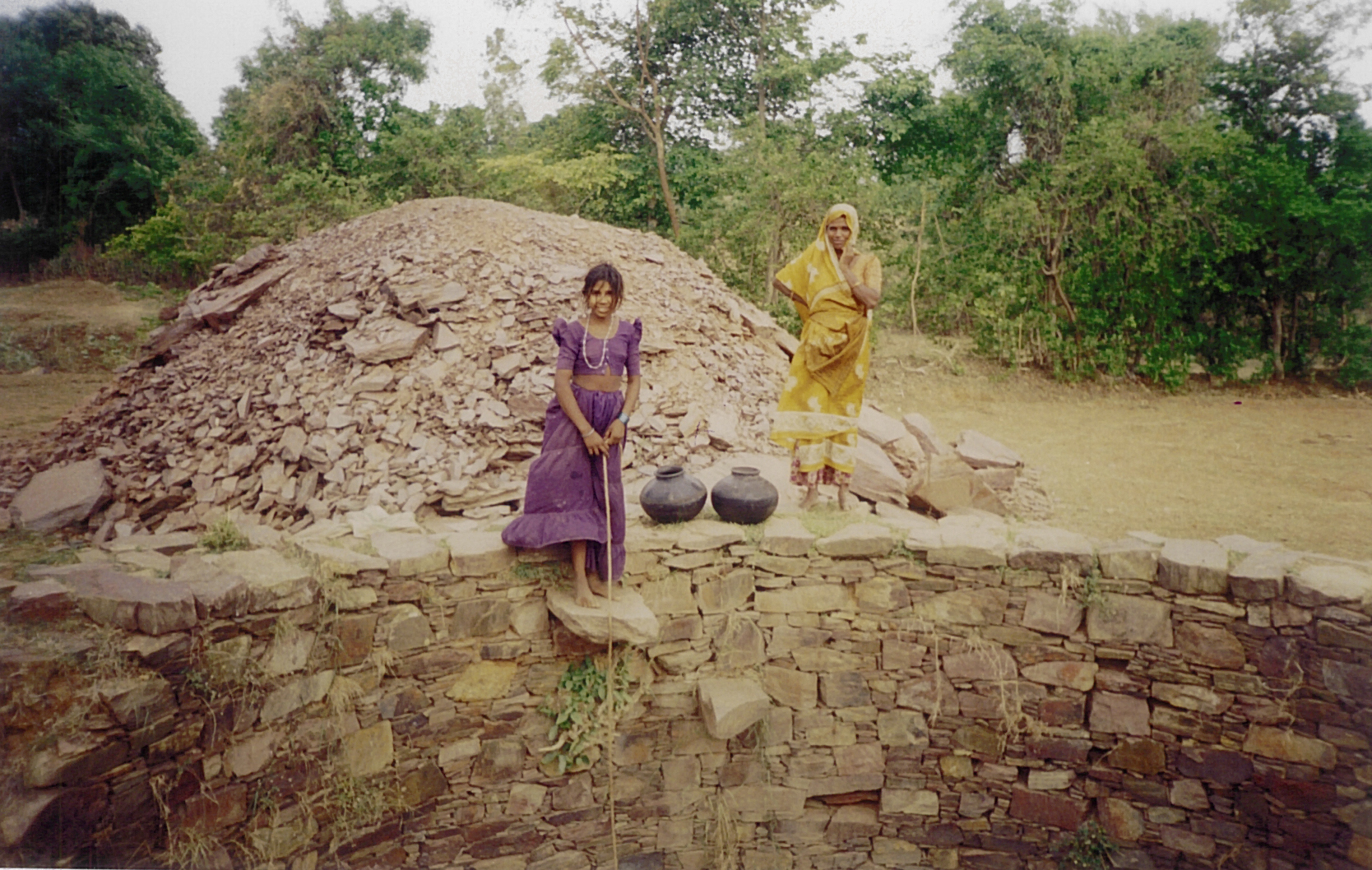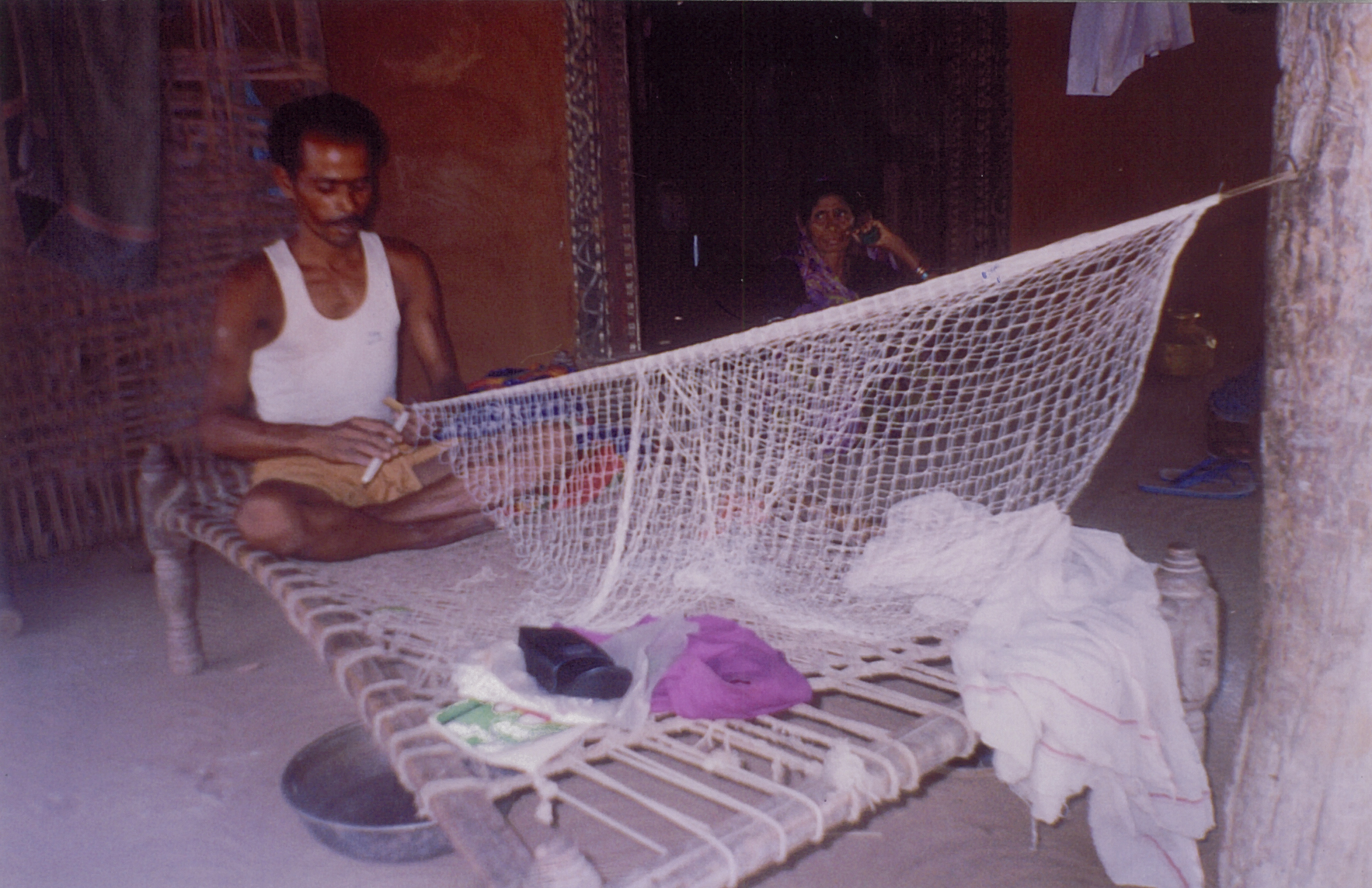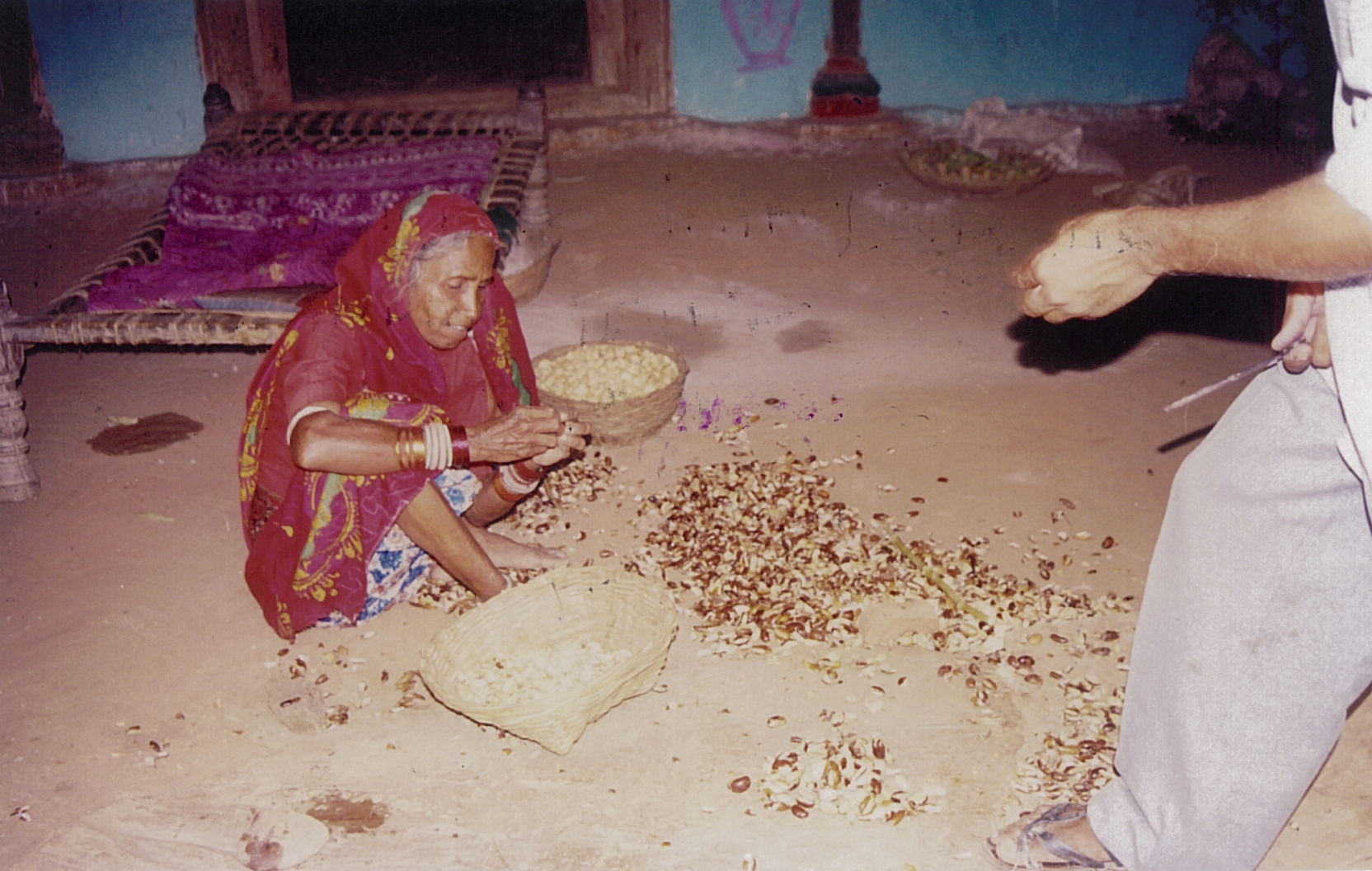Get Next Shodhyatra Update:
Phone:
079-27913293, 27912792
Email:
shodhyatra@sristi.org
The Honey Bee network has been organising ‘shodhyatra’, (a journey of exploration on foot through the villages), twice a year in summer and winter, for the last three years along with innovators and other members of the network.
We undertook our fifth ‘shodhyatra’ from Kasana village in Sabarkantha district of Gujarat to Koba village in Rajasthan. We have walked for more than 1200 km so far.
FAMILIARITY BREEDS CONTEMPT
We covered a distance of about 135-km in the course of nine days (June 20-28, 2000). The journey included a total of 46 villages, six talukas, four districts and two states. This journey gave us a rare opportunity to meet and interact with several innovative farmers, artisans, and local knowledge experts. We also honoured some of the outstanding knowledge experts right at their doorstep to convey that their knowledge and innovations matter. Such unsung heroes of our society have remained unrecognised for so long. Unless outsiders honour such experts, local persons and other members of society somehow do not seem to acknowledge their expertise. Is it because of too much familiarity?
In Kasana village we met Shri Babubhai Dnanabhai Tral who is believed to be an expert in removing thorns. He has been providing this service for the last 20 years to people from nearby villages. He claims that if a person eats the leaves of ‘angori’ (Balanites roxburghii) then the thorn comes out easily without any pain (a claim which needs to be tested). He adds that he has removed thorns as old as three years by this method. In the same village, 77- year-old ‘pashuvaidya’ (animal healer)
Shri Savantsingh Chauhan shared his indigenous methods of treating animals by using various kinds of herbs. Shri Ratanbhai Shivabhai Patel of Moti Moydi village told us that seventy per cent of the farmers in his village used chemical fertilisers. They have observed an increase in the diseases of paddy by the use of chemical fertilisers. To control this, he suggested that they could soak seeds in sour buttermilk and dry these before sowing. Gangaben Somabhai Pandod of Royani village in Meghraj taluka of Gujarat used her indigenous knowledge to store grains, cereals and pulses. She mixed the chaff of gram and wheat to store gram and wheat respectively and to protect these from pests (See Honey Bee 4(1);12,1993: 9(4):3,1998 for use of chaff). She also claimed that the smoke of properly burnt dried fish helped in controlling the leaf curl disease of chilies (See HB 7(1):13,1996, 9(4):17,1998, 10(1): 14,1999 for other methods to control leaf curl disease).
Shri Javabhai Khatubhai Damor (Limdi Timba, Meghraj taluka, Gujarat) shared with us a method of growing chili seedlings. Some grasses and other organic waste matter are burnt in the field where one wants to plant the seedlings. The ground is dug, and the ash is uniformly spread before sowing the seeds. Finally the ground is covered with the leaves of ‘khakhra’ (Butea monosperma) or ‘sag’ (Tectona grandis).
Seedlings grow properly within five to seven days. Burning leaves and organic waste is supposed to destroy various pests like termite and weeds.
Shri Sohanlal Tavadiya of Chaja village in Bagidra taluka of Rajasthan gave us various examples of local solutions that he used in his day-to-day life. For instant one could use leaves of neem, oil of castor, ash and gram powder for storing grains. To stop loose motion in children he prescribed ten drops of milk from Banyan tree and five pieces of ‘patasa’ (sugar biscuits). Marching towards the end of our journey we met Durgasankar D Nagar, a teacher in Kanela village of Bagidra taluka of Rajasthan. He narrated one of his experiences of planting mango tree in his farm. Each time he planted them, the seedlings would die due to the attack of white ants. At that time he recalled a person whom he had met some 30 years ago who perhaps had a solution to this problem. He went to him and narrated his problem. The solution he got from his friend was very interesting.
One could add the ash of teak leaves and cow dung at the base of the pit and also around the mango tree to prevent attack of termites (See HB 2(1): 15, 1992; 4 (2 & 3): 11, 1993; 7(1): 13, 1996; 8(1): 9, 1997 and 9(3): 15, 1998 for other methods to control termite). We asked him as to why did he take such a long time to recall this solution. And why did he never share it with others in his class or village. What he said provided a rich insight about the innovation on remaining unknown to the larger public. He said, “There was no ‘context’ in which he could have shared such a solution”. We kept thinking about the reason for an absence of this context in our society.
We came across Shri Balbhadrasingh Rathod, an innovative teacher in Naharpur village. He used pictures of fruits, utensils, birds etc., to form different alphabets. This method enabled students to grasp faster and remember the alphabets easily.
Activities like biodiversity contest and embroidery contest were also organised during the ‘shodhyatra’. Eight biodiversity contests were organised and a total of 166 students participated in these contests. The students were asked to identify the maximum number of plants and their uses. Twenty-one students were given awards for their knowledge about various uses of local plants. They showed tremendous enthusiasm and the contests also showed that the knowledge of plants in the local communities was immense. An embroidery contest was held in Kasana village of Gujarat in which fifteen women took part. Three participants viz. Shardaben, Parvatiben and Radhikaben of Kasana village of Gujarat showed extraordinary performance and were given prizes.
In order to build confidence of the local people in their ability to develop innovative solutions on their own, the villagers were shown innovations done by others through the multi-lingual, multimedia Honey Bee database. It triggered the curiosity of the farmers, men and women as well as young children about innovations. Many innovators like Amruthbhai, Bhanjibhai, Badribhai, Rajnikar Kanadiya also shared their respective innovations with the local people. Impromptu plays were also performed about the importance of sustainable agriculture. The play evoked tremendous response among the young and the old. Badribhai took the lead in enacting the play.
During the course of nine days, we met several farmer men and women, local vets, and teachers who used their indigenous knowledge to solve their day-to-day problems. Totally, 49 innovators were honoured. Among them, 24 were local vets who were experts in their respective field. Most of them were serving their fellow villagers voluntarily. Five women were also honoured for their indigenous knowledge about livestock management, grain storage and plant protection.
SRISTI team appealed to the villagers to set up ‘gyan van’ (knowledge forest) in their villages to preserve various species of medicinal and useful plants. The ‘gyan van’ could be set up on a small piece of land either owned by the ‘panchayat’ or some interested farmer. They could collect some of the threatened species from the nearby forests, plant them and look after them. The villagers could then use those plants for personal use but would not let the trees be cut. The villagers were excited in many places as it was a totally new concept for them and they agreed to set up ‘gyan van’ in their villages. The youth of the villages seemed to be more enthusiastic in this endeavour.
‘Shodhyatra’ is one of the many means pursued by SRISTI for promoting participatory learning and dissemination of experimental and inventive ethics among communities. The practices scouted during the ‘shodhyatra’ shall be further verified and then added to computerised database with the names and addresses of the innovators as well as the communicators. SRISTI will carry on its search for odd balls and local innovations in its next ‘shodhyatra’ scheduled in December 2000 (Dec 23rd till Jan 2), from Nasik (Maharashtra) to Navsari (Gujarat). May the spirit of collegial learning, experimentation and innovation grow. Readers interested in joining next ‘shodhyatra’ should write back soon.
FLICKR GALLERY
